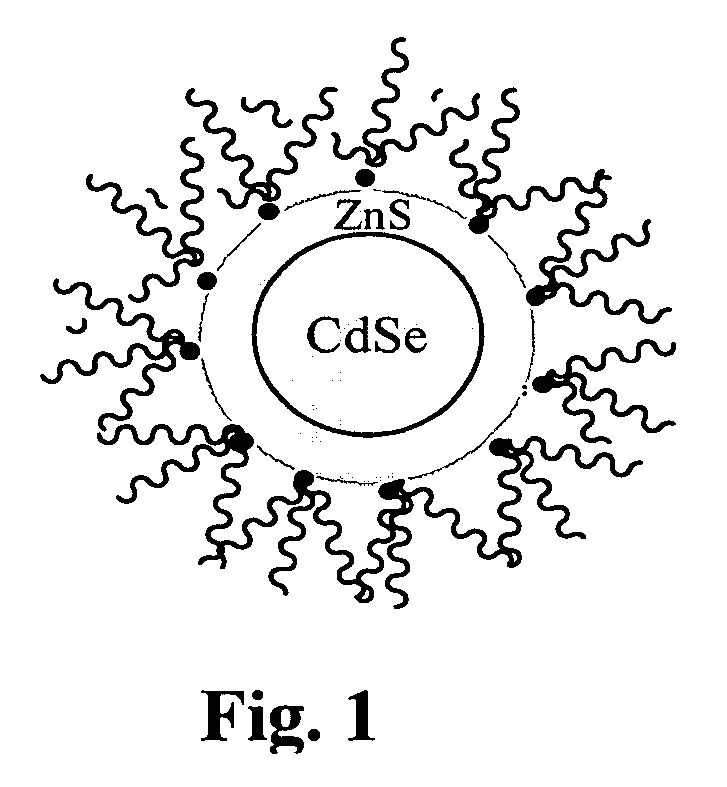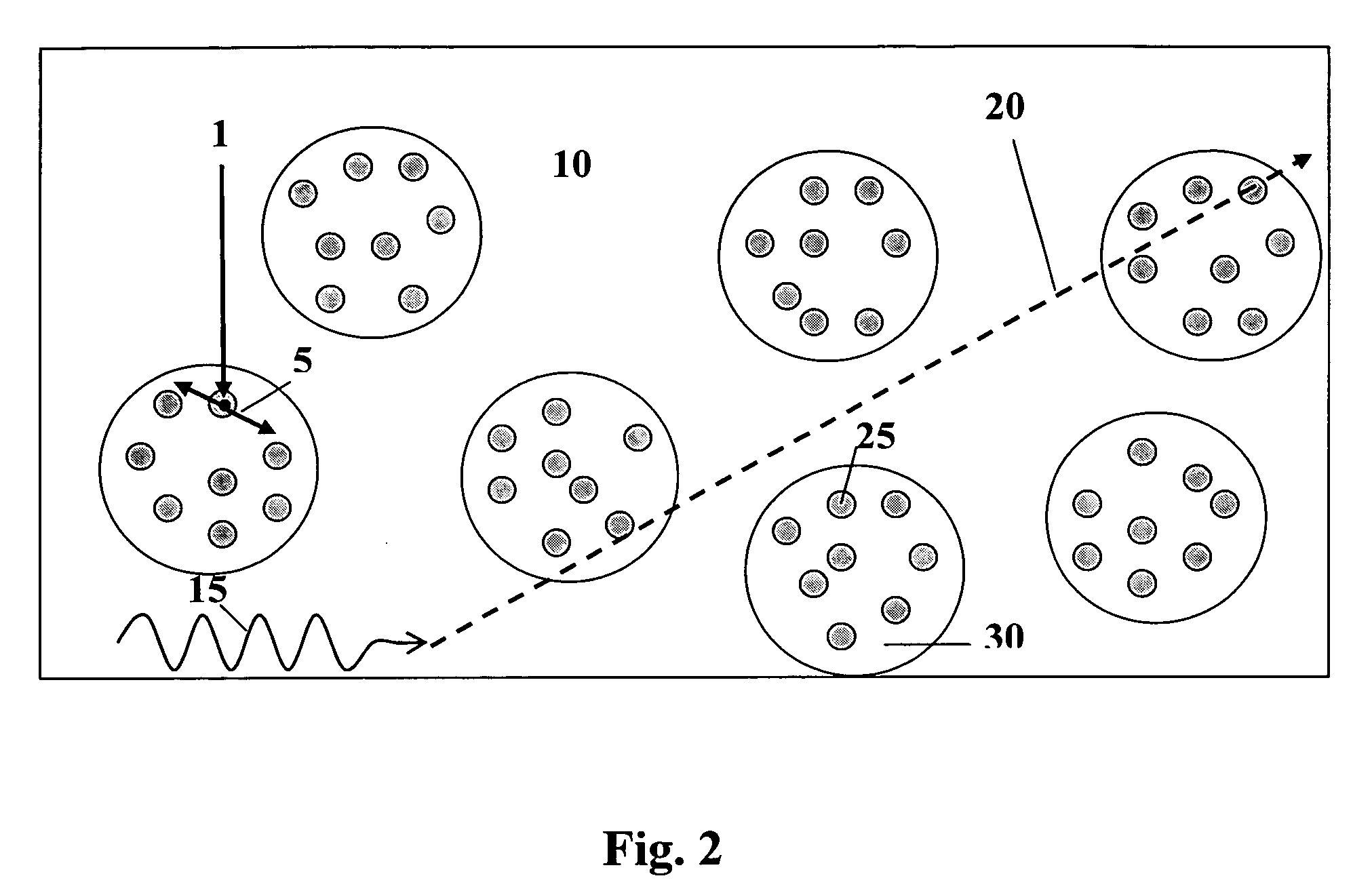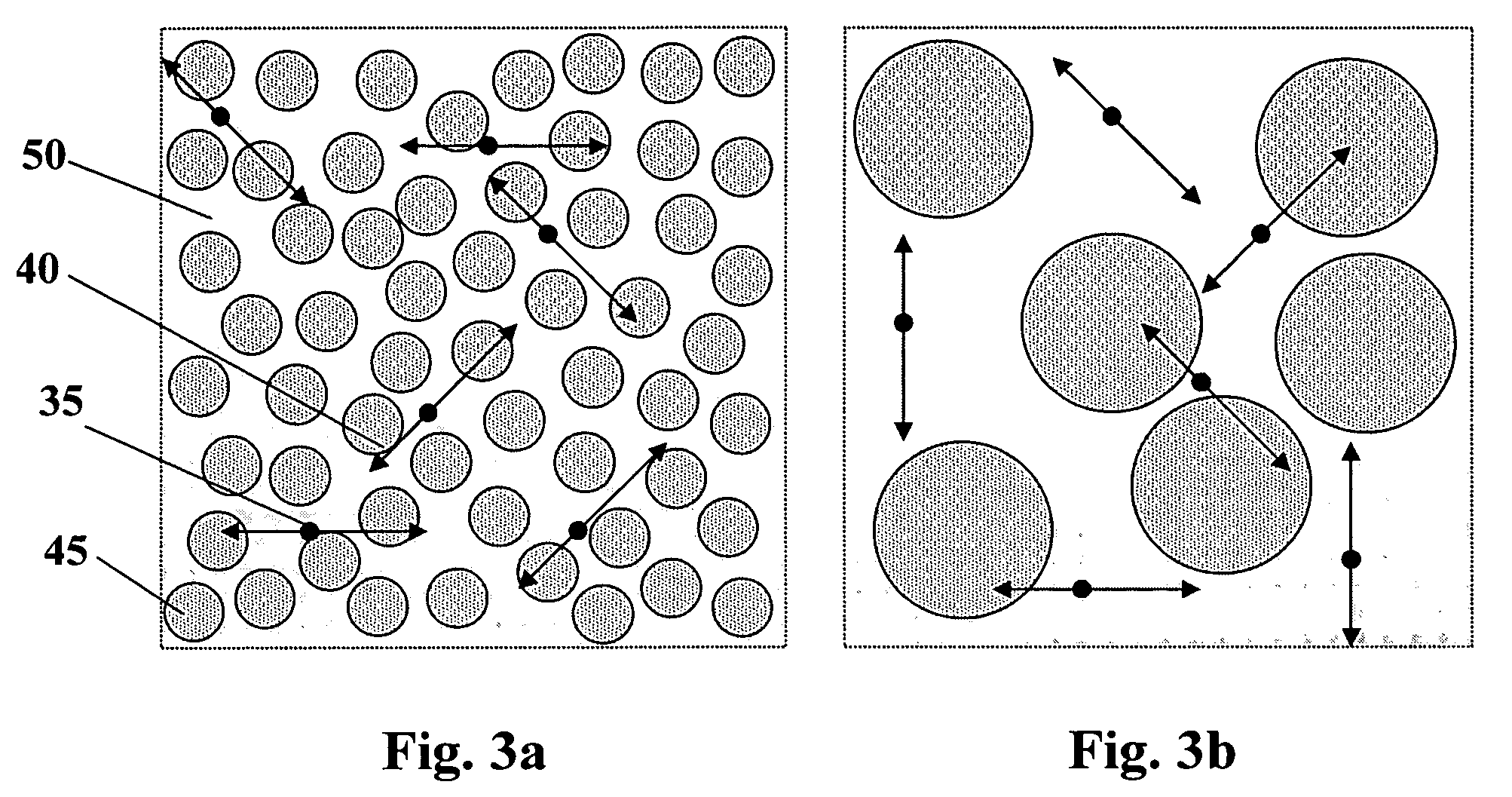Composite scintillators for detection of ionizing radiation
a technology of ionizing radiation and scintillators, which is applied in the direction of luminescent compositions, material nanotechnology, other chemical processes, etc., can solve the problems of limiting difficult to detect neutrons directly, and the greatest deficiency of scintillators in the field of neutron scintillators, so as to improve the efficiency of neutron detection.
- Summary
- Abstract
- Description
- Claims
- Application Information
AI Technical Summary
Benefits of technology
Problems solved by technology
Method used
Image
Examples
example 1
[0077] All syntheses and handling of CdSe / ZnS core / shell nanocrystals were preformed under an inert atmosphere. In a typical synthesis, cadmium acetate (100 mg) was dissolved in tri-n-octylphosphine oxide (6.0 g, TOPO) in a reaction flask. The temperature was then raised to 270° C. Into the reaction flask at 270° C., a solution of selenium (80 mg) in tributylphosphine (2.0 mL, CAUTION: pyrophoric) was swiftly injected. Upon injection of selenium solution, the reaction temperature dropped to around 250° C. The uniform CdSe nuclei were allowed to grow at this temperature (250° C.) for various lengths of time (from 0 to 3 min) to yield various sizes of nanocrystals which photoluminesce at wavelengths ranging from 470 to 550 nm. The reaction was then allowed to cool down to room temperature at which anhydrous methanol was added to precipitate CdSe nanocrystals. The obtained nanocrystals were washed three times with copious amount of fresh, anhydrous methanol. The next step is the cappin...
PUM
 Login to View More
Login to View More Abstract
Description
Claims
Application Information
 Login to View More
Login to View More - R&D
- Intellectual Property
- Life Sciences
- Materials
- Tech Scout
- Unparalleled Data Quality
- Higher Quality Content
- 60% Fewer Hallucinations
Browse by: Latest US Patents, China's latest patents, Technical Efficacy Thesaurus, Application Domain, Technology Topic, Popular Technical Reports.
© 2025 PatSnap. All rights reserved.Legal|Privacy policy|Modern Slavery Act Transparency Statement|Sitemap|About US| Contact US: help@patsnap.com



